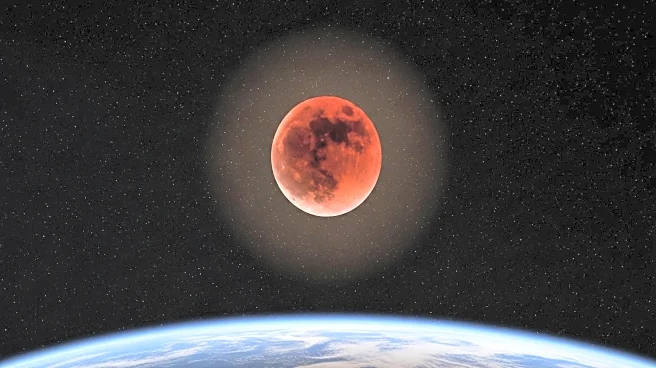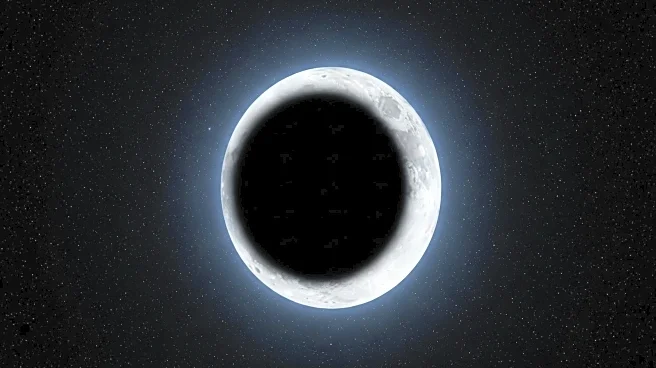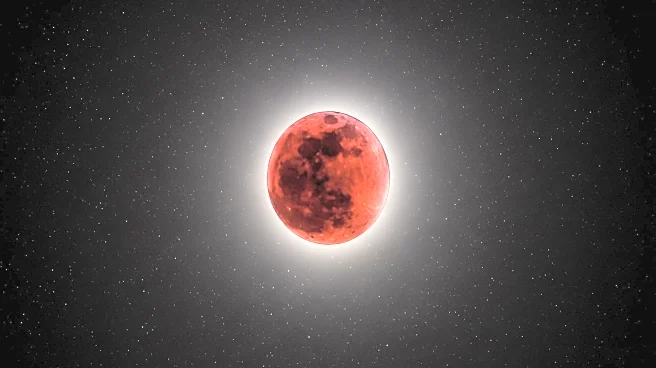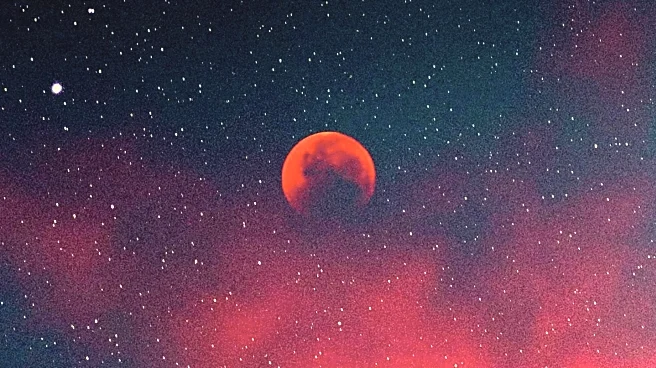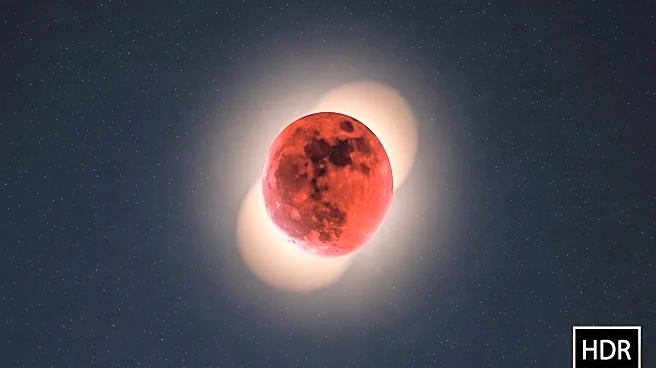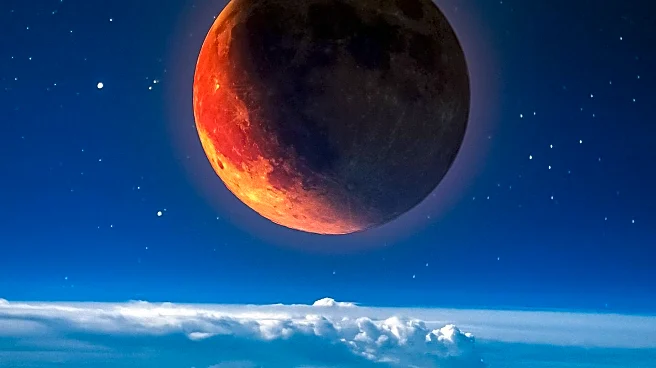What's Happening?
The September corn moon of 2025 is set to be a unique astronomical event, occurring on September 7th. This full moon will coincide with a total lunar eclipse, resulting in a blood moon. The corn moon is named for its timing with the corn harvest in the northern United States. During a total lunar eclipse, the moon enters Earth's shadow, causing it to appear red due to the scattering of sunlight through Earth's atmosphere. This phenomenon is known as a blood moon. The eclipse will last for 82 minutes of totality, but it will not be visible from North America. Instead, regions such as Australia, India, Cairo, and South Africa will have the opportunity to witness the event.
Why It's Important?
The occurrence of a blood moon during a total lunar eclipse is a rare and visually striking event that captures the interest of astronomers and the general public alike. While the eclipse will not be visible in the United States, it highlights the interconnectedness of global astronomical phenomena. Such events can inspire interest in science and astronomy, encouraging educational pursuits and public engagement with celestial events. Additionally, the cultural significance of the corn moon ties into agricultural traditions, marking a period of harvest and seasonal change.
What's Next?
The next total lunar eclipse visible in the United States is scheduled for March 2-3, 2026. This provides an opportunity for U.S. residents to plan for viewing and educational activities related to lunar eclipses. Meanwhile, the September 2025 eclipse will be a significant event for regions where it is visible, potentially leading to local gatherings and educational programs centered around the eclipse.
Beyond the Headlines
The cultural and historical significance of the corn moon and blood moon can be explored further, as these events have been interpreted in various ways across different cultures. The blood moon, in particular, has been associated with folklore and myths, often seen as an omen or a time of change. Understanding these perspectives can enrich the appreciation of such astronomical events.


